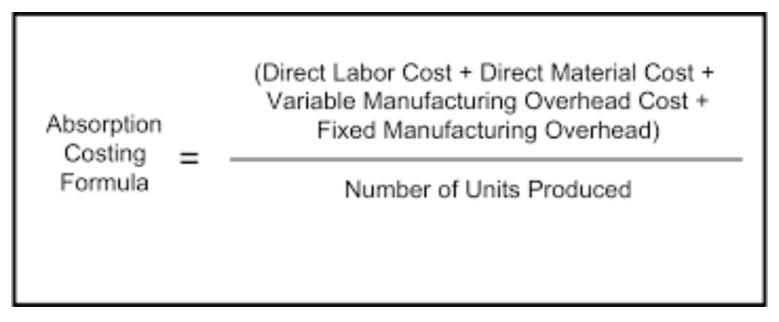
There is, however, a convenience fee for the use of a credit or debit card when paying your taxes. Residents of Illinois must pay sales tax on items that are tax-exempt in some other states. Localities can balance sheet add as much as 4.75%, and the average combined rate is 8.855%, according to the Tax Foundation. Start one or more free state income tax calculators and get an estimate of your state taxes.

Are pensions or retirement income taxed?
Illinois state income tax is a significant financial obligation for residents. Understanding its impact is essential for effective financial planning and compliance. The state’s tax structure, along with credits and deductions, influences overall tax liability for individuals and illinois income tax rate businesses. Employers in Illinois must withhold state income tax from employees’ wages based on Form IL-W-4, Employee’s Illinois Withholding Allowance Certificate, and remit these amounts to the Illinois Department of Revenue.
- Illinois has a 1.95 percent effective property tax rate on owner-occupied housing value.
- Tracking investment activity throughout the year ensures accurate reporting and compliance.
- Penalties for insufficient estimated payments are calculated based on the amount and duration of underpayment.
- This replaces a 2018 surtax imposed on corporations with incomes above $1 million dollars, which expired at the end of 2023.
- Regardless of age, Social Security benefits are not taxed in Iowa.
Illinois Tax Brackets for Tax Year 2023
- Missing these payments can lead to penalties and interest, making proactive planning essential.
- If you have a qualifying child or relative, you might qualify for the Child Tax Credit.
- Your Illinois income includes the adjusted gross income (AGI) amount figured on your federal return, plus any additional income that must be added to your AGI.
- Consequently, for 2025, corporations will face a flat 7.99 percent income tax in Pennsylvania, down from 8.49 percent in 2024.
- Four states—Alaska, Illinois, Minnesota, and New Jersey—levy top marginal corporate income tax rates of 9 percent or higher.
- Are you a single parent who supports a child or qualifying person?
Self-employed individuals or those with significant non-wage income may need to make quarterly estimated tax payments to avoid underpayment penalties. Estimated payments are due on April 15th, June 15th, September 15th, and January 15th of the following year. Penalties for insufficient estimated payments are calculated based on the amount and duration of underpayment. This means that no matter Legal E-Billing how much money you make, you pay that same rate. Sales and property taxes in Illinois are among the highest in the nation. Unlike the federal government and many other states, Illinois does not have tax brackets that impose higher rates on people who earn more.
Federal Single Filer Tax Tables
Many, or all, of the products featured on this page are from our advertising partners who compensate us when you take certain actions on our website or click to take an action on their website. This may influence which products we review and write about (and where those products appear on the site), but it in no way affects our recommendations or advice, which are grounded in thousands of hours of research. Our partners cannot pay us to guarantee favorable reviews of their products or services. We believe everyone should be able to make financial decisions with confidence.
- The Federal income tax also has a standard deduction, personal exemptions, and dependant deductions, though they are different amounts than Illinois’ and may have different rules.
- Illinois has some of the highest average property and sales tax rates in the country.
- Many companies are not subject to the CIT because they are taxed as pass-through businesses, with income reportable under the individual income tax..
- When you prepare your return on eFile.com this is all calculated for you.
- Illinois offers tax credits and deductions to lower taxable income or tax liability.
- Retail sales taxes are an essential part of most states’ revenue toolkits, responsible for 24 percent of combined state and local tax collections.
- Up to 50 percent of your benefits will be taxed if you file an individual tax return and make $25,000 to $34,000 in total income — or if you file jointly and as a couple make $32,000 to $44,000 in total income.
What about sales and other taxes?
- Payment methods include electronic payments through the MyTax Illinois portal, direct debit, or traditional checks or money orders.
- Some of your income may be subtracted when figuring your Illinois base income.
- Estates over that amount must file an Illinois estate tax return and face tax rates up to 16%.
- Sales and property taxes in Illinois are among the highest in the nation.
- If you expect to owe $500 or more on April 15th, you must pay your income tax to Illinois quarterly using Form IL-1040-ES.
- The standard deduction, which Illinois does not have, is a deduction that is available by default to all taxpayers who do not instead choose to file an itemized deduction.
Some of your income may be subtracted when figuring your Illinois base income. There is no Washington income tax on retirement income such as Social Security, pension income, 401(k), or IRA distributions. Not to mention, some states on this list have relatively high sales taxes, and several may have estate and inheritance taxes, too. These factors can influence how much money you could save as a resident of these states and may affect future outlays to your heirs. While these states don’t tax “traditional retirement income,” you may still have to pay tax on other income types you earn in retirement, like wages, interest, and dividends.

These documents are critical for accurate reporting and calculations. Single filers, who are unmarried and do not qualify for other statuses, report income independently, though this status may offer fewer tax benefits. The total exemption amount is deducted from base income to arrive at “net income.” The tax rate is then applied against net income. The Illinois Individual Income Tax is imposed on every individual earning or receiving income in Illinois. The Illinois Income Tax is based, to a large extent, on the federal Internal Revenue Code (IRC). Lawmakers should keep that reality in mind as they make changes to tax and economic policies.

These reduce a taxpayer’s total tax bill by some amount, which is in contrast to tax deductions, which only reduce a taxpayer’s taxable income. For example, the Illinois Property Tax Credit is equal to 5% of Illinois property tax paid on a principal residence for single filers with an AGI of $250,000 or less and joint filers with AGI of $500,000 or less. If you paid $1,000 in property taxes in 2024, you could claim a credit of $50 on your income tax return, which equates to $50 less that you end up paying in taxes. After a brief hiatus, New Jersey reimposed a 2.5 percent additional surtaxA surtax is an additional tax levied on top of an already existing business or individual tax and can have a flat or progressive rate structure. Surtaxes are typically enacted to fund a specific program or initiative, whereas revenue from broader-based taxes, like the individual income tax, typically cover a multitude of programs and services. On corporations with taxable incomeTaxable income is the amount of income subject to tax, after deductions and exemptions.
Where To Send Your Illinois Tax Return

For example, Illinois has one of the highest sales tax rates in the U.S., but it’s also one of the states that don’t tax retirement income. The head of household status applies to unmarried individuals maintaining a home for a qualifying person, such as a child or dependent relative. This status offers a higher standard deduction and more favorable tax treatment than single filing. To qualify, the taxpayer must pay over half of household expenses and have a dependent living with them for more than half the year.
